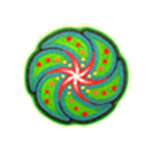 Photo: Guillermo Aldana
Photo: Guillermo Aldana
Body paint sacred Huichol and Coras
Contemporary indigenous body painting of the Great Nayar is an eminently ritual practice and therefore ephemeral. The body is decorated in a special way only for certain occasions, as humans, from that sacred makeup, temporarily make certain otherworldly beings. The most important for understanding the overall significance of body painting of Cora and Huichol Indians aspect is to place within their mutual relationship as symbolic of a dualist system counterparts.
According to the native cosmogram, the dominant axis corresponds to the east-west, it is the daily path of the sun through the sky. The north-south axis is secondary, accounting for seasonal transit of the star on the horizon. The Huichol occupy the eastern part of the mountain top--of indigenous territory, while the coras inhabit the western part -of below. Father
During the period of the spring equinox Sun's death is celebrated at the hands of the forces of darkness and subsequent resurrection and triumph over them. Thus, in the theater-dancistic representations of the current Easter (xumuabikajetse), the coras-as Western, watery and dark-beings it is up enatizar the story of enemies and victimizers del Sol. Therefore, males each community are transformed during the three "holy days" in the underworld beings, painting his body with water sources (rivers, streams, posas).
Huichol dress and keep your body just decorate their cheeks and shins with bright paint uxa, a root brought from Wirikuta in San Luis Potosi.

